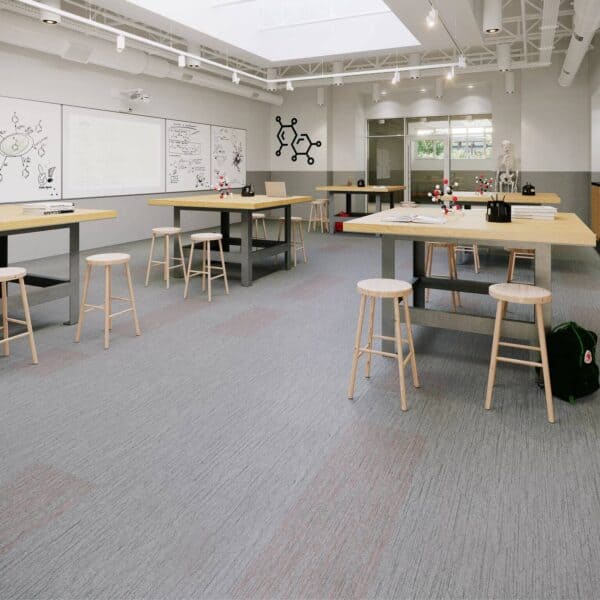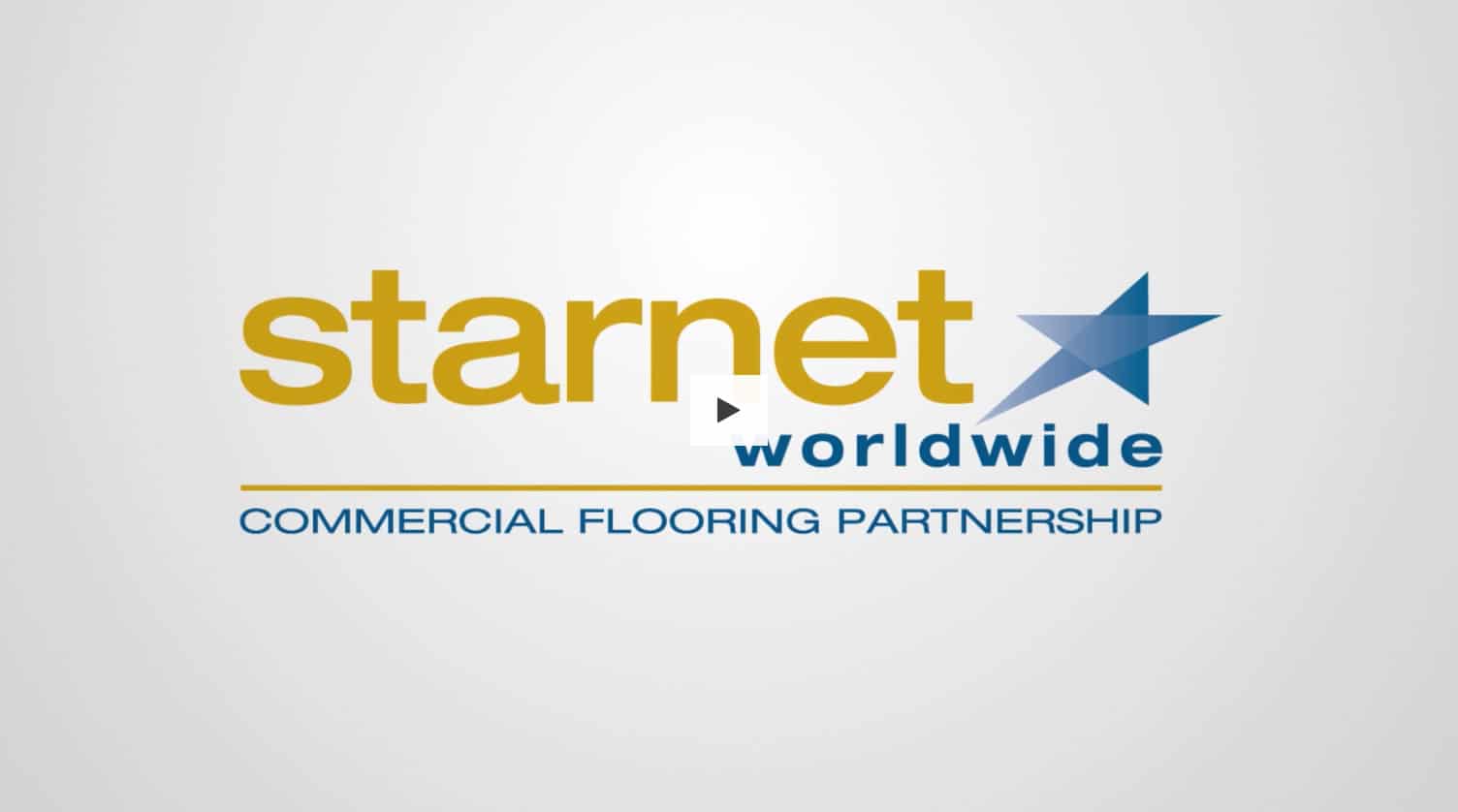Mark Bischoff from Starnet shared his insights with me about the upcoming changes in resilient flooring that will significantly impact commercial flooring professionals. As the President and CEO of the world’s largest network of full-service independent flooring contractors, Mark’s understanding of the industry is unparalleled. His comprehensive experience in the flooring business is evident in this interview.

Mark’s discussion highlights the need for commercial floor care professionals to be aware of the changes in the resilient flooring market and what this means for their future work. We will be following up soon on how to navigate these changes. Stay tuned for more insights on this critical topic.
Q: The old guard of resilient flooring manufacturers has changed in recent years and today’s educational and work spaces are evolving not just from post-COVID experiences but also from extreme labor shortages in the environmental services arena. We have seen “lower maintenance” products replacing materials such as traditional VCT flooring that had required strip and finish cycles. What transitional materials are you seeing used?
A: This is an interesting year for the industry because we have a combination of things happening. The K-12 educational construction schedule will return to a pattern that was in place up to the year 2019. Due to the global disruptions of 2020 through 2022, the normal seasonality of the large demand bubble for resilient flooring will return in 2023. This impacts all of Canada and the United States. Because most of the states and provinces are in reasonably good financial positions, schools and university systems will benefit from a return to traditional spending levels, which includes facility investment and flooring work. In some areas, we will see an elevated level of new construction or repair and replacement work after delays from prior years.

The second major change that will impact the market in 2023 is related to the production capacity of VCT tile, a mainstay of educational facilities. The changes include streamlining the production of VCT in the United States as well as moving bulk production to Mexico from the US capacity that was available in 2019. Both major producers are also under new management in the United States, which will also cause some disruption. Of course, the companies will make every effort to minimize the negative impacts on the channel, but the reality is that there will be unintended negative impacts after so many decades of relatively stable and reliable VCT production capacity. It is likely that the planned changes by the manufacturers will not work out exactly as intended once the demand ramps. At that point, it will be too late to recover the season for VCT. This will cause a shift to alternative resilient products under extreme schedule pressure to be completed before the students return to the classroom or campus. Our members believe that many VCT projects will have to be switched, with the major beneficiary being the LVT product category. LVT has some of the neutral organic patterns and bright accents that society at large expects for a school system interior. Tremendous pressure will be put on manufacturers to deliver “low volume” LVT SKUs to projects that must be completed in the third quarter. In the LVT world, low volume is anything that is not a wood pattern visual.
The difficulty that this presents is that the patterns most often used in schools vary dramatically from the traditional high-volume patterns in LVT design. Wood looks continue to dominate sales of LVT products, and traditionally education projects favor neutral colors for the main floor interrupted by brilliant pops of color for interesting patterns. Communities will expect this design aesthetic as it follows the tradition of VCT use in education and retail stores that they have seen their entire lives. The LVT manufacturers have not anticipated this dramatic shift in demand by a segment in a single year. There will be challenges where entire projects will be delayed by a few cartons of royal purple LVT, which until 2023 were identified as “low volume” accents and rarely stocked in finished product or in film patterns to the level needed to service the education market. There will be some benefit to resilient PVC sheet flooring, linoleum, ceramic, and polished concrete as school systems become desperate for alternatives to meet the schedule. It is March, and the manufacturers that have not planned for this dynamic will miss a golden opportunity to absorb market leadership in a single year from the incumbent brands and products that have been dominant in K-12 facilities for several decades.
Q: Is the process of re-education of servicing the materials a transition that has been easily accepted?
A: The use of alternative flooring materials in schools is expected to cause significant disruption. It’s important to note that K-12 school facilities have been dominated by asphalt tile and VCT since the abandonment of wood flooring in favor of resilient flooring in the 1920s. While wealthier communities have used alternative flooring materials such as terrazzo, ceramic, rubber, and carpet, these materials have not achieved the market penetration of VCT in schools and retail settings.
The increasing cost of labor to install flooring is now impacting the ongoing maintenance of facilities. Staffing buildings with crews to manage floor covering maintenance is no longer reasonable given the other responsibilities facility professionals face today. School systems typically benefit from new flooring once a generation, and communities expect a safe and clean student environment. Applying high gloss coatings to flooring is the easiest way for a building to appear safe and clean, even if that is not recommended for that product type.

The visual expectations for communities built over decades of VCT use in schools and retail stores have shaped the expectations for alternatives that may be used for the first time in 2023. Unfortunately, if facility managers follow the maintenance instructions for the alternatives this summer, such as LVT, they will receive pressure from the community regarding the look of the new floors, as they will say “paid for by my property taxes!”
There are very few new products on the market that are intended to have high gloss levels while put in use. We will have a wave of alternative flooring materials judged by the community as missing expectations, resulting in a high volume of unnecessary claims on manufacturers. The manufacturers will not meet expectations, as they will not view “missing expectations” as legitimate claims from the market. The flooring contractor will be stuck in the middle, especially if they do not operate a floor care division.
In addition, the wear caused by desks and chairs, as well as the expected easy seasonal refresh to eliminate the evidence of wear, will put tremendous pressure on the available labor for facility managers. This will take several years of education and professional attention by floor care experts to resolve. It is already too late to save the industry from the initial trauma, so we will just have to work through it over time.
The sad part is that many end users will have a negative experience, which will have a long-term impact on the industry opportunity. They will invest elsewhere in products and services that produce better results and community praise the next time given the opportunity.
Q: Is part of the steps to navigate the visual expectations from management (i.e., the principals, CEO, or in the case of the military, the command structure) that shiny isn’t necessarily equal to clean?
A: I am not sure we will ever escape this challenge. If you look at other experiences that consumers and business-to-business clients can relate to, “shiny is clean” is true. A shiny automobile is a clean automobile. A shiny stainless-steel drinking fountain sink is perceived as clean too. Clean windows shine and reflect the sun. Our challenge is to sell shiny floors to people who want shiny floors.
There are still choices in resilient and hard tile that can be buffed to a high gloss shine if the facility can afford the labor to accomplish the visual. In addition, the coating chemistry available to hit the high gloss level desired is widely available, but really should be applied by professionals. Unlike the past, facility people do not get enough repeat occurrences to achieve proficiency in flooring maintenance. Developing proficiency requires daily execution. Only professionals from service firms develop the repeatable skills needed to get the results end-users have been conditioned to expect.
Expectations are high, but budgets for maintenance are not. That is why the education opportunity for modern chemistry applied by professionals is so great.

Q: Is there any conversation taking place about wear vs damage, i.e., scratches into the factory-applied coatings, which are considered damage and not wear?
A: This is a great opportunity for manufacturers to innovate and solve the problem identified by unhappy customers. The R&D opportunity and marketing potential around durability is tremendous, yet the industry has been too slow to meet demand. Vinyl Asbestos Tile- VAT, out of production since the early 1980s, has never been matched in durability by a modern product. Why have industry players failed to achieve significantly better performance in 40 years? It is foolish to tell the client that their needs or expectations cannot be met. If that is the attitude of the industry, we will all fail. Our industry has been content with incremental improvement and copying competitor designs for too long. Real innovation requires risk-taking and bold goals. Entrepreneurs will eventually fill the gap left by major manufacturers who focus primarily on reducing internal costs. Sustainable profits come from innovation and risk-taking, not from running depreciated machinery to capacity.
Q: What should the flooring contractor be doing now to prevent issues down the road?
A: Flooring contractors must invest time and energy into the market, setting expectations and collaborating with stakeholders to achieve the best outcomes. It is also helpful to be proficient in business development, project execution, and continuous care for commercial flooring. All of this is easy to describe, but extremely difficult to accomplish. Timing is everything, and the priority responsibilities of project execution often overcome the time invested in business development and education.
Our members continue to invest in productivity systems, technology, and tools so that they can devote more time to education in the marketplace. They are providing at least half of the value of the flooring at the jobsite. Flooring has no value to the marketplace when it is in the carton. It also has no value if it does not meet the expectations of the client.
Our industry has a track record of selling flooring and then excusing the lack of performance when it is used in common applications. For example, flooring used in schools must be able to perform under daily exposure to the wear of desks and chairs. Flooring sold into healthcare applications needs to be able to withstand the dynamic loads of hospital beds and medical equipment. If it cannot perform under those common segment-specific applications or be reasonably recovered to acceptable appearance levels, it probably should not be sold into that segment.
Flooring contractors can provide amazing value to end-users and manufacturers if they are invited to the programming process. Because so much of the work is renovation, they also have insight into what can be successfully used in facilities based on use and staffing levels. The architectural community and manufacturers can take advantage of the close relationships that our member flooring contractors have with end-users to do more product testing and product development.

Architectural professionals get very little material education early in their career. For many of them, it takes years to really understand the flooring industry because they have so many other responsibilities, such as life-safety, on any given project. Our contractors must continue to encourage dialogue before and after the sale as well as showing these professionals value before a project is in play.
The isolated lab testing and product development done at the manufacturer level are leaving too many lingering issues that eventually are exposed in the field. We continue to see too much instability, surface appearance retention issues, and unreasonable application guidelines that reduce productivity in the field. These issues also create claim traps for contractors on a modern construction site.
The opportunity for innovation in the industry is massive, both in product and for the ongoing maintenance of products. The average limited warranty is a laundry list of exclusions that are a roadmap for multi-million dollar innovations by entrepreneurs that will make end-users raving fans for the value provided to their business by high-performance installed commercial flooring.
ABOUT STARNET COMMERCIAL FLOORING
Since 1992, Starnet Worldwide Commercial Flooring Cooperative has served the industry as a trusted partnership of commercial flooring professionals and quality flooring manufacturers. More than 170+ independent contractors doing business in nearly 400 locations across North America have become more profitable while building the market share of Starnet’s manufacturing partners. Through collective strength, integrity, shared best practices and advocacy of training, Starnet members and vendor partners ensure improved project outcomes, complete customer satisfaction and reduced costs related to doing business. The membership’s strength in numbers creates a combined annual volume of over four billion dollars. For more information, visit www.starnetflooring.com.


